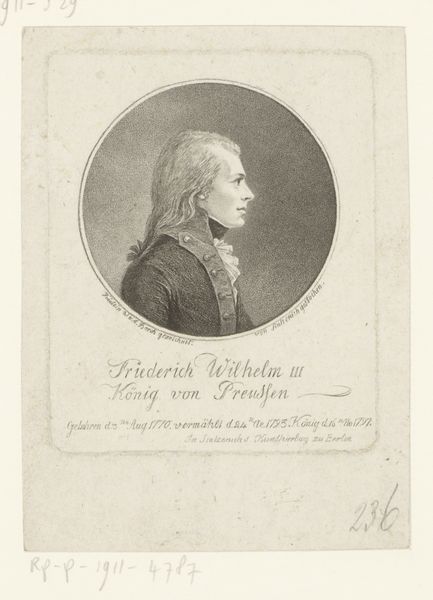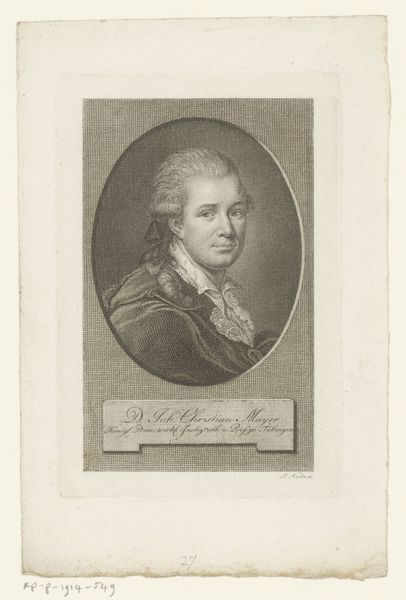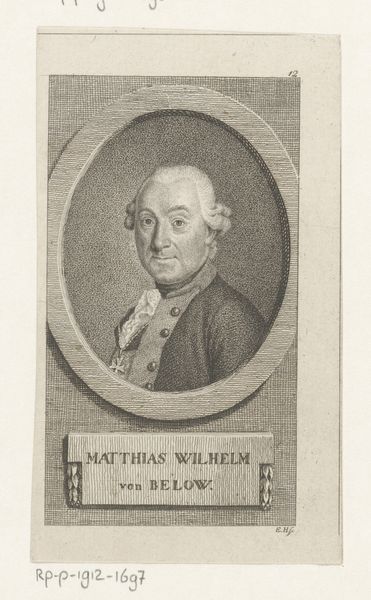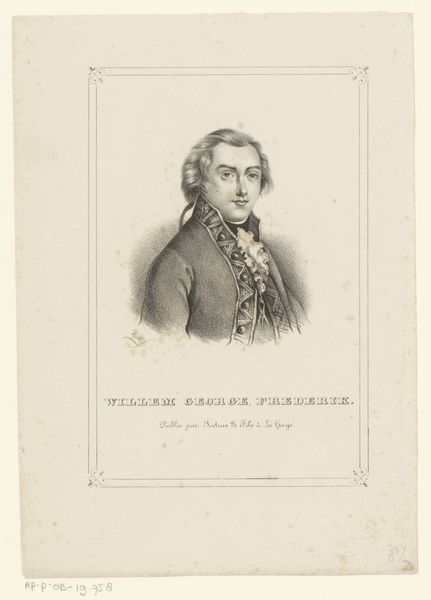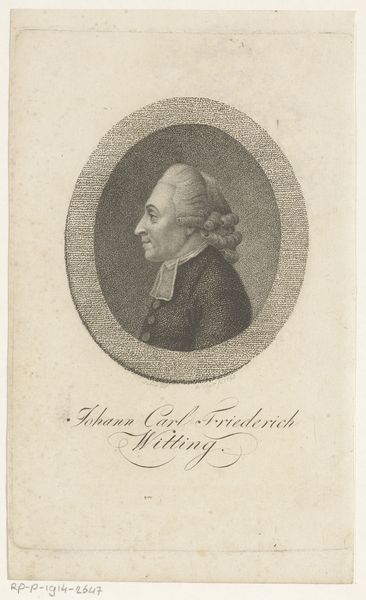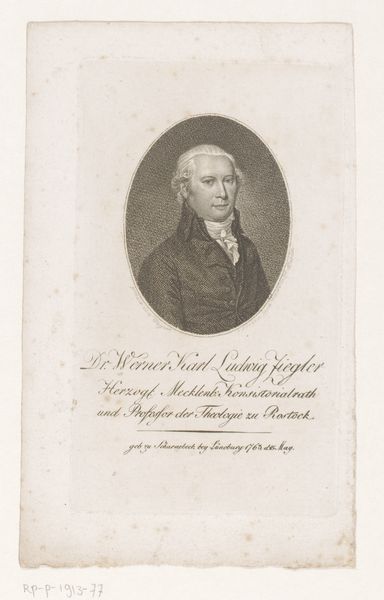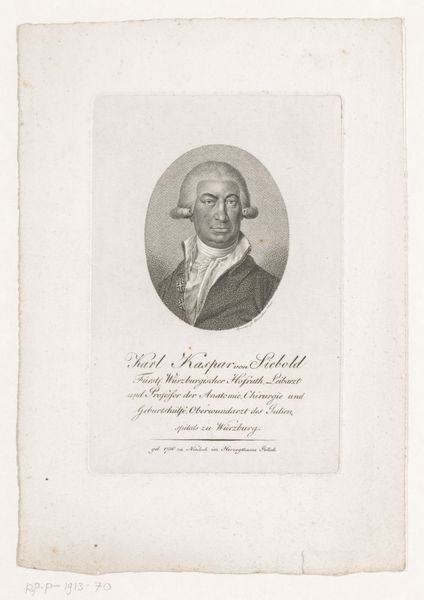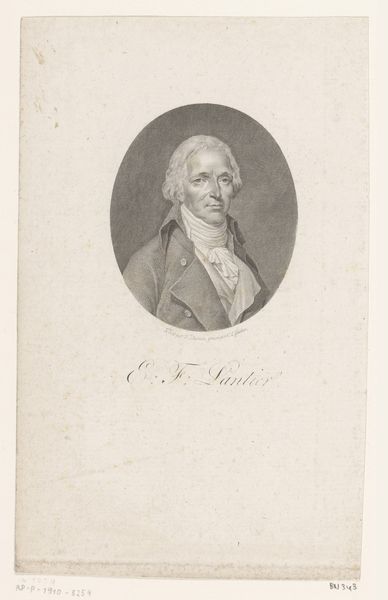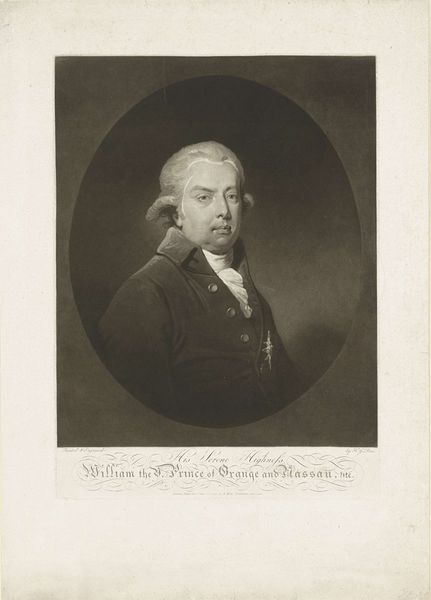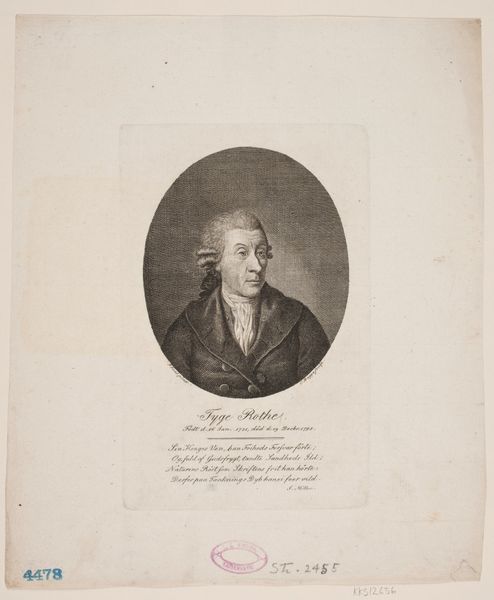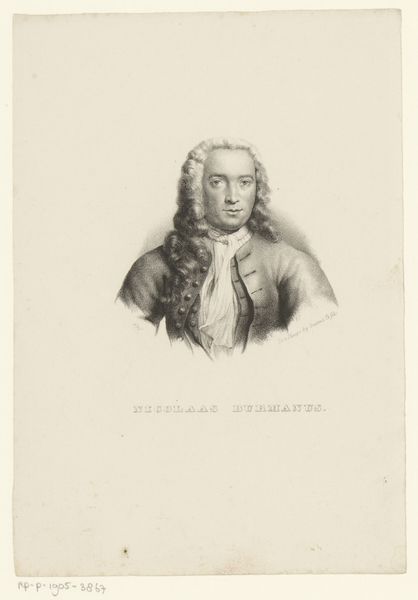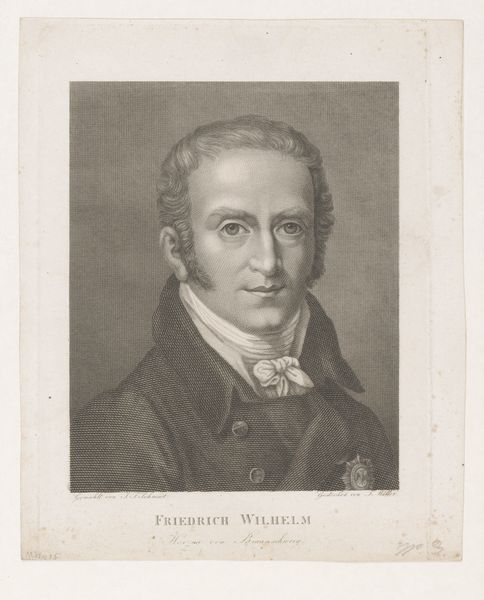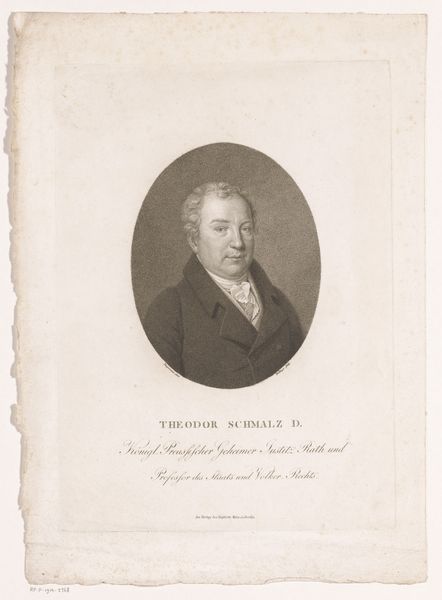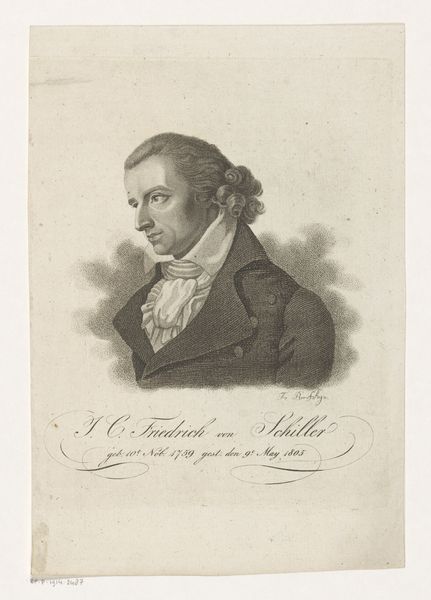
print, engraving
#
portrait
#
neoclacissism
# print
#
old engraving style
#
classical-realism
#
historical photography
#
history-painting
#
academic-art
#
engraving
Dimensions: height 255 mm, width 190 mm
Copyright: Rijks Museum: Open Domain
Curator: Let’s turn our attention to this engraving entitled "Portret van Friedrich Wilhelm III," created sometime between 1780 and 1833 by Meno Haas. Editor: My first thought is "austere." There’s a crispness to the line work, a formality. You immediately understand this represents someone of significant power. The monochrome lends gravity, a sense of timelessness, even. Curator: It’s a striking example of neoclassical portraiture, rendered in a medium perfectly suited to its message. Engraving allowed for precise, repeatable imagery, which in itself reinforced the power and status of the subject through wide circulation. The symbols are meticulously chosen, reinforcing themes of military strength and inherited power. Notice the sharp contour lines which lend such formality to the personae depicted. Editor: Absolutely. And thinking about the material process… the labor involved in such detailed engraving. It speaks volumes about the culture's investment in depicting this leader. Was this commissioned, or more of a mass-produced image intended for public consumption? The scale seems relevant to this inquiry. Curator: Undoubtedly commissioned. The dedication to Queen Louise Auguste Wilhelmine Amalie speaks to a specific patronage, linking this image to both political power and personal relationships. I see in it an idealized version of leadership meant to evoke a sense of duty and divine right. Editor: And how fascinating that even in reproduction, this print still carries that intended weight. The craft here doesn’t simply depict power, it actively *constructs* it through labor, materials, and accessible visual language. Look closely, for instance, and see how that subtle tonal range gives the image such definition. Curator: Considering this, the portrait now speaks more fully to the interplay between propaganda, art, and the construction of identity, during a turbulent time in European history. Editor: For me, thinking about its tangible production helps demystify some of that seemingly inherent power. The image doesn’t just represent Friedrich Wilhelm III—it’s an object embodying the entire system that upheld his rule.
Comments
No comments
Be the first to comment and join the conversation on the ultimate creative platform.
